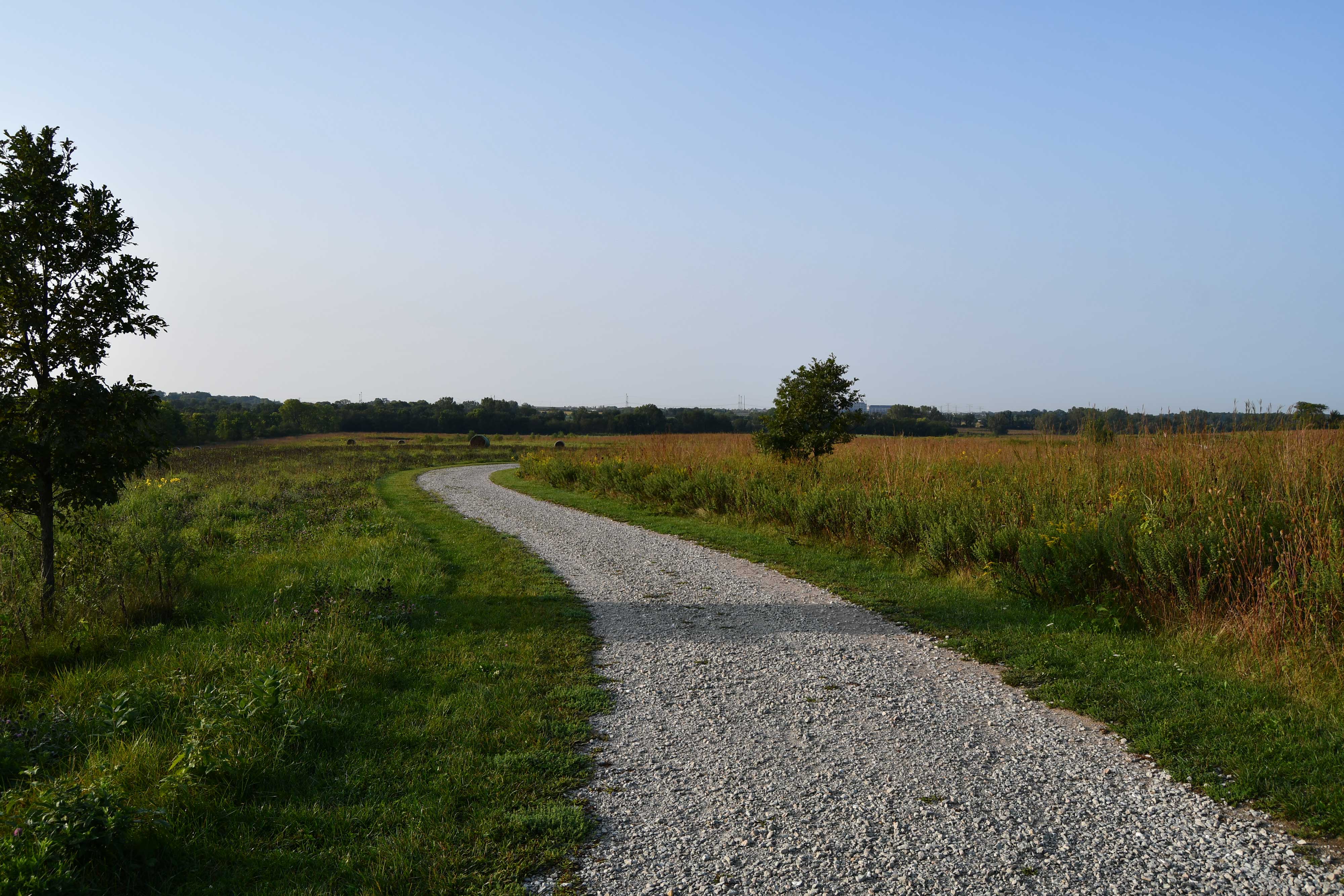| Story by Meghan McMahon |
9/28/2022
If you’ve ever wondered what Illinois’ rolling prairies looked like hundreds of years ago, when grasslands dominated the state landscape, look no further than Hadley Valley.
The preserve is a shining example of how the Forest Preserve District’s restoration efforts can seemingly take land back in time. Today Hadley Valley spans more than 800 acres, and it is the site of the largest habitat restoration effort in Forest Preserve District history. The award-winning work involved stream de-channelization and wetland and wildlife habitat restoration work across 500 acres of the preserve, done in partnership with the Illinois State Toll Highway Authority, Openlands, U.S. Army Corps of Engineers and the O’Hare Modernization Program.
Prior to the restoration, the land was agricultural fields. Restoration work began early in the 2000s, and the first priority was restoring Spring Creek, which runs through the preserve, said Juli Mason, restoration program coordinator for the Forest Preserve District. That work was a technical challenge because crews were tasked with both restoring the creek to its original state as much as possible while also making it larger to accommodate needs based on today’s population and land usage in the area.
She said the creek’s current path is close to its original flow based on research and aerial photos that were able to be used as a guide. During the initial work on the site, Mason recalls walking through a dense shrub thicket and stumbling on an area that she soon realized was the creek bed from the original creek. That original creek bed was then able to be incorporated into the new creek.
“It was really cool to be part of the process as water started flowing again,” Mason said.

)
)
)
)
)